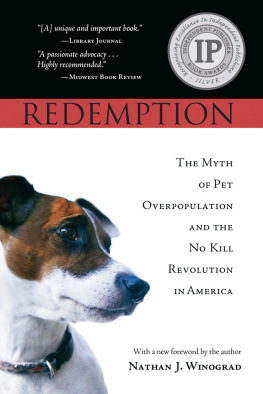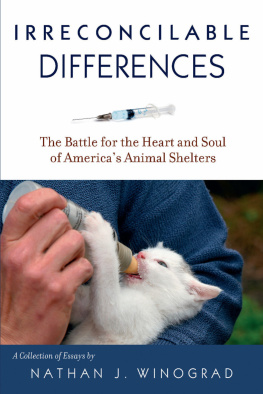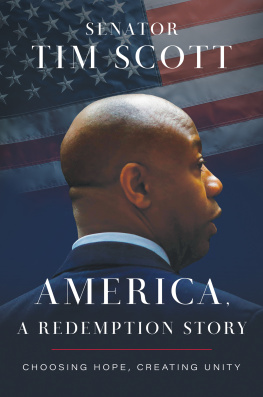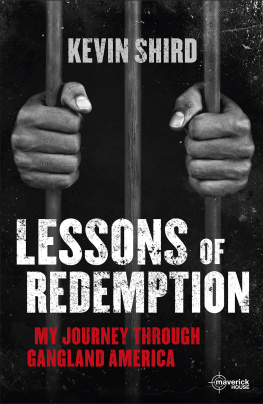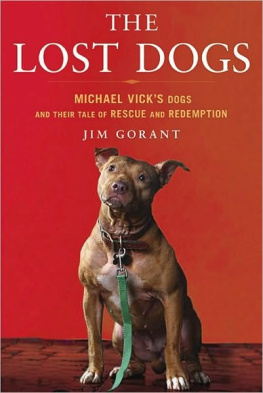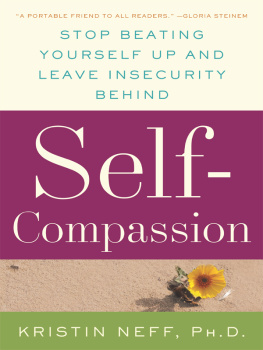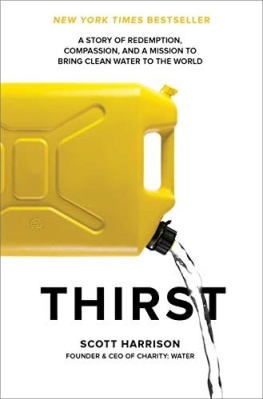P RAISE FOR N ATHAN J. W INOGRAD AND R EDEMPTION
A WARDS
Silver Medal, Independent Book Publishers Association
Best Book, USA Book News
Muse Medallion, Best Book, Cat Writers Association of America
Award of Excellence, Dog Writers Association of America
P RAISE FOR THE B OOK
Redemption is a passionate advocacy for ending the killing of homeless dogs and cats in shelters. Telling the story of how the movement of animal sheltering in the United States was born of compassion and lost its way... Redemption offers hope that America can yet change its ways.Highly recommended.
Midwest Book Review
An important work.
The Bark magazine
Within its pages, readers and animal lovers can find the blueprint not so much for our failure to save the animals in our communities, but for our ability to start doing so today.
San Francisco Chronicle (SFGate.com)
One of the most important books youll read this year.
Pajiba.com
I cannot remember any work that has so dramatically altered my point of view on any subjectnor another book that has me so excited to think of what real reform can do to save the lives of shelter pets.
Petconnection.com
For anyone who has ever loved an animal, this book, like no other non-fiction, takes you through the full spectrum of emotions: from sadness to anger, from fear to hope. But redemption? That is ultimately left up to each and every one of us..."
Air America Radio
[A] unique and important book.
Library Journal
Love animals? Then don't miss Nathan Winograd's Redemption .
Dogpolitics.com
[An] excellent, empowering new book.
Fetchdog.com
[T]he most provocative and best-informed overview of animal sheltering ever written.
Animal People
P RAISE FOR THE A UTHOR
Millions of healthy animals are [killed] in shelters every year.Nathan Winograd wants that reduced to zero...Winograd is helping to save thousands, even millions.
Reader's Digest
Bow-WOW! Nathan J.Winograd.This extraordinary pet-loving former attorney is out to make the world safe for homeless animalsone region at a time.
Metropolitan Home
The world owes much to those rare individuals who see things differentlyand who then devote themselves to vindicating their maverick conclusions.
The Bark
Read more reviews at www.nathanwinograd.com
R E D E M P T I O N
The Myth of Pet Overpopulation and the No Kill Revolution in America
NATHAN J. WINOGRAD
Copyright 2007, 2009 by Nathan J.Winograd. All rights reserved.No part of this book may be used or reproduced in any manner whatsoever without written permission except in the case of brief quotations embodied in critical articles and reviews. For information, address Almaden Books at www.almadenbooks.com.
Second Edition
Cover and Interior Design:
Judith Arisman, arismandesign.com
Cover Photos:
Dog, istockphoto.com/susaro
Cat, istockphoto.com/silberkorn
Library of Congress Control Number: 2006936683
ISBN 13: 978-0-9790743-1-8
ISBN 10: 0-9790743-1-2
Printed in the United States of America
To my wife, Jennifer.Who believed, long before I did.
Table of Contents
S INCE ITS RELEASE in September 2007, Redemption has become the most critically acclaimed book ever written on its topic. Not only has the book helped shift the national debate about killing, it is also playing a direct role in helping to transform communities. A shelter manager in Washington says the book completely changed her views and she is committing herself to saving all animals in her shelter.Another in Ohio reported that the book gave her the conviction to move forward with her No Kill ambitions. Yet another in Louisiana reported to her staff,Weve been doing it wrong, and we are going to start doing it right.
After reading Redemption , county commissioners in an Indiana community succeeded in taking to No Kill a shelter that previously killed the vast majority of dogs and cats, often cruelly. As Redemption celebrates its continuing success, Tompkins County, New York, finished its seventh No Kill year, Charlottesville,Virginia, entered its third, and new communities like those in Reno, Nevada, entered the No Kill club. Other communities in other states have also embraced No Kill or are aggressively moving in that direction. No Kill is on the agenda of local governments nationwide as advocates in communities as diverse as Seattle, Washington, and Indianapolis, Indiana, are using Redemption and the model it advocates to force changes in the practices of local shelters.
There have been other notable changes as well. The Humane Society of the United States (HSUS) favorite misnomer euthanasia has lost its cache.Rescue groups and animal advocates have stopped using it and other HSUS euphemisms such as putting them to sleep to describe the abhorrent practice of systematic shelter killing. People are more aware of widespread mistreatment of animals in shelters. And they are less tolerant of the poor care and the killing, the excuses built up over the decades to justify it, and the legitimacy that groups like HSUS give to it. This has put the large national humane groups on the defensive, trying to take credit for the decline in killing nationally even as they opposed and in some cases continue to oppose the programs responsible for it, and by softening their anti-No Kill positions.
Redemption debunks the myth of pet overpopulation and puts the blame for the killing where it belongs: on the shoulders of the very shelter directors who find killing easier than doing what is necessary to stop it, on the local governments who continue to underfund their shelters or place them under the regressive oversight of health and police departments (and even under sanitation!), and on shelter managers who protect uncaring and even cruel staff members at the expense of the animals.
More than all of that, average people are now aware that shelters kill. And they are aware that there are some shelters and communities that do not kill. After reading the book, one animal lover in Los Angeles, California, told me: At least now we know whator more accurately, whothe problem is. We also know how to make them stop. And in more communities nationwide, we have.
T HE M YTH OF P ET O VERPOPULATION
Unfortunately, many shelter directors remain steadfast in their refusal to embrace the No Kill paradigm.To them, the culprit for the killing remains pet overpopulation, a dogma they cling to with the fervor of religious faith and which they deem to be simply beyond questionoutside the realm of factual confirmation, data, and analysis.
When I argue in this book that pet overpopulation is a myth, I am not saying that people arent irresponsible with animals. It doesnt mean there arent a lot of animals entering shelters. It doesnt mean it wouldnt be better if there were fewer of them being impounded. Nor am I saying shelters dont have institutional obstacles to success. But it does mean that these problems are not insurmountable.And it does mean we can do something other than killing for all savable animals right now, today: if all shelter directors cultivate the desire and will to do so, and then earnestly follow through. That is good news. It is news we should celebrate. And it should be the focal point with which we target our advocacy efforts to achieve the greatest declines in killing possible in the shortest amount of time.
Current estimates from a wide range of groups indicate that between four million and five million dogs and cats are killed in shelters every year. Of these, given data on the incidence of aggression in dogs (based on dog bite extrapolation) and save rates at the best performing shelters in the country from diverse regions and demographics, about 90 percent of all shelter animals are savable. The remainder consists of hopelessly ill or injured animals and vicious dogs whose prognosis for rehabilitation is poor or grave.That would put the number of savable dogs and cats at roughly 3.6 million on the low end and 4.5 million on the high end of the spectrum.
Next page
